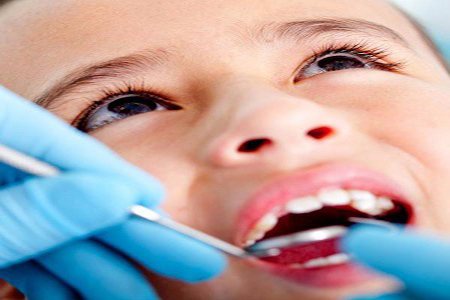
In order to treat cavities and identify children with tooth decay students aging 6-14 were provided with dental care services across the country, Hamid Samadzadeh told ISNA news agency on Monday.
According to a memorandum of understanding signed between Ministry of Education and Ministry of Health in the year 1394 (March 2015-March 2016) dental care services were offered to 7 million children over the past three years, Samadzadeh highlighted.
“Within the framework of the scheme we are striving to increase oral hygiene among students,” he noted, adding that in order to improve oral hygiene educational brochures and books are sent to school as well.
Oral hygiene is a basic factor for oral health. Poor oral hygiene leads to dental plaque-collections, which in turn can cause gingivitis eventually leading to periodontal diseases.
Before implementing the plan decay-missing-filled (DMF) index among 1.2 million children aging 12 was 2.9 which decreased to 1.84 and is planned to drop to less than 1 by the year 2022, he added.
The decay-missing-filled (DMF) index or decayed, missing, and filled teeth (DMFT) index is one of the most common methods in oral epidemiology for assessing dental caries prevalence as well as dental treatment needs among populations
Samadzadeh went on to say that about 37,000 forces including teachers and healthcare providers are trained to improve oral hygiene among students.
Also students’ oral health profiles are created as well, he said.
He finally concluded that 8 free of charge dental care services for children aging under 14, pregnant women and breastfeeding mothers are being offered in rural and urban areas with population less than 20,000.
Oral health worldwide
Oral diseases are the most common noncommunicable diseases (NCDs) and affect people throughout their lifetime, causing pain, discomfort, disfigurement and even death, World Health Organization (WHO) highlights.
The Global Burden of Disease Study 2016 estimated that oral diseases affected half of the world’s population (3.58 billion people) with dental caries (tooth decay) in permanent teeth being the most prevalent condition assessed.
Severe periodontal (gum) disease, which may result in tooth loss, was estimated to be the 11th most prevalent disease globally.
Severe tooth loss and edentulism (no natural tooth) was one of the leading ten causes of Years Lived with Disability (YLD) in some high-income countries.
In some Asian-Pacific countries, the incidence of oral cancer (cancer of the lip and oral cavity) is within the top 3 of all cancers.
Dental treatment is costly, averaging 5% of total health expenditure and 20% of out-of-pocket health expenditure in most high-income countries.
The oral health care demands are beyond the capacities of the health care systems in most low-and middle-income countries (LMICs).
Oral health inequalities exist among and between different population groups around the world and through the entire life course. Social determinants have a strong impact on oral health.
Behavioral risk factors for oral diseases are shared with other major NCDs, such as an unhealthy diet high in free sugars, tobacco use and harmful use of alcohol.
Poor oral hygiene and inadequate exposure to fluoride have negative effects on oral health.

Add new comment